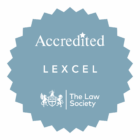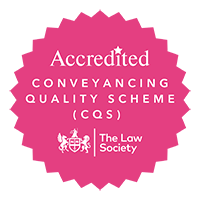With recent claims from Greater Manchester mayor Andy Burnham suggesting that suspending the Right to Buy scheme may help revive the incentive for local councils to build more social housing, WHN conveyancer Mathew Simkin explains how the scheme works and the process behind the purchase.
The first thing to note is that there are two different schemes available for purchasing a local authority owned property and a housing association owned property. For a local authority property, it is the Right to Buy Scheme. For a housing association it is the Right to Acquire Scheme. The maximum discount available under the Right to Buy Scheme is currently £102,400 across England (£135,400 in London). Under the Right to Acquire Scheme, the maximum discount is £16,000, depending on your location in the UK.
You are eligible to apply to buy your local authority or housing association home if:
- The property is your only or main home
- The property is self-contained, no part of the property is shared
- You’re a secure tenant
- You’ve had a public sector landlord (for example, a local authority, housing association or NHS trust) for three years – it does not have to be three years in a row
- You have no county court judgments or legal issues with debt
The opportunity to own a home
If you rent a property from a local authority or housing association, having the opportunity to purchase it can provide you with the security and freedom to make changes to the place that you consider home.
Home ownership also provides the family with an asset and an investment for the future. Purchasing your rented accommodation from your local authority or housing association is also a helpful way to join the property ladder.
The Transfer Deed
When a property is sold under either scheme, the transfer is usually by way of a Transfer of Part, which is the sale of part of an area of land. This is because the local authority or housing association will usually still own the entire estate in which your home is situated. A Transfer of Part is more complex than a standard transfer as this is the first time the individual property has been sold. This means the Transfer Deed includes a lot more detail and requires a lot more legal consideration than a standard Transfer Deed.
Your solicitor will therefore need to check that all the required rights of access (pedestrian and vehicle), rights of maintenance and rights of entry to neighbouring properties have been correctly granted by the Transfer Deed.
The solicitor will also need to check for any service charges or maintenance charges payable and there will also be a plan prepared for the property. It is imperative this plan is checked by you, as a purchaser, to ensure that the boundaries are correct and reflect the full extent of the property.
A purchase under both schemes can take longer than other transactions, but this is due to the legal complexity of the Transfer Deed. Once the Transfer Deed has been approved, a completion date will be agreed.
It is important to remember that buying a home brings with it responsibilities and an ongoing financial commitment, so it is recommended that you should seek financial advice before making the commitment to purchase a property.
Currently there are no official plans to suspend either scheme either nationally or in Greater Manchester, but should any changes occur our team at WHN will provide an update.
Mathew works alongside WHN’s solicitors in the conveyancing team in the Accrington office handling all aspects of buying and selling residential property, as well as remortgaging, transfer of equity and Islamic finance.
For further advice and information on purchasing a residential property under the Right to Buy Scheme, please contact Mathew on 01254 236221 or email: mathew.simkin@whnsolicitors.co.uk or visit our Residential Property page to find out more how we can help.













